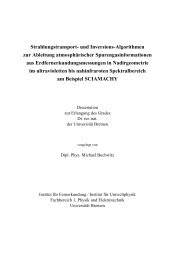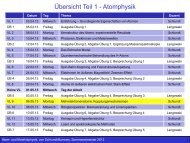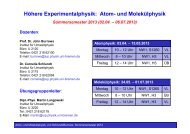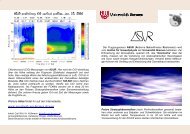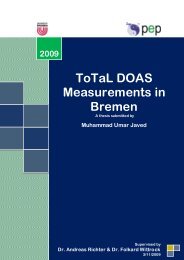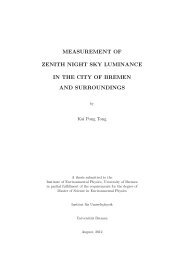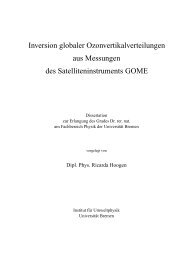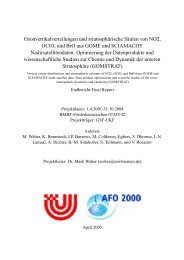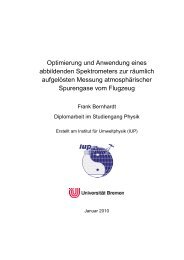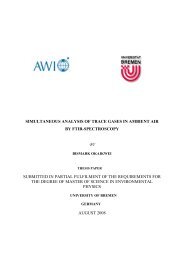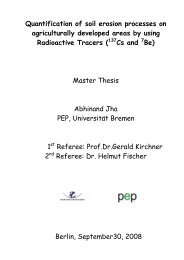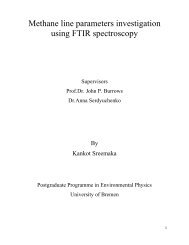True Coincidence Summing Correction in Gamma Spectroscopy
True Coincidence Summing Correction in Gamma Spectroscopy
True Coincidence Summing Correction in Gamma Spectroscopy
Create successful ePaper yourself
Turn your PDF publications into a flip-book with our unique Google optimized e-Paper software.
For the radionuclide under consideration, the total effect with respect to γ-l<strong>in</strong>e g can<br />
be described by a co<strong>in</strong>cidence correction factor COI g<br />
COIg = (1 - Lg).(1 + Sg)<br />
(3.1)<br />
From the observed peak area, the corrected peak area (N’ p.g ), can be computed<br />
us<strong>in</strong>g the equation:<br />
p,g<br />
N<br />
p,g<br />
COI<br />
g<br />
N' = (3.2)<br />
In case of simple decay schemes, the problem of co<strong>in</strong>cidence correction is well<br />
understood for the po<strong>in</strong>t sources as can be seen <strong>in</strong> the section 2.10 (mathematical<br />
summ<strong>in</strong>g correction) while general formulae for complex decay schemes have been<br />
given by ANDREAV et al (1972, 1973) 11,12 . However, for a more general case such<br />
as volum<strong>in</strong>ous sources e.g. Mar<strong>in</strong>elli beakers and bottles, the correction for<br />
co<strong>in</strong>cidence summ<strong>in</strong>g is more complicated due to the complexity of self-absorption<br />
and the subsequent cascade summ<strong>in</strong>g with partial peak energies, and the formulae<br />
given <strong>in</strong> section 2.10 are no longer valid.<br />
3.2 Estimation of <strong>True</strong> <strong>Co<strong>in</strong>cidence</strong> <strong>Correction</strong>s for Volum<strong>in</strong>ous<br />
Sources<br />
The co<strong>in</strong>cidence summ<strong>in</strong>g depends on the position with<strong>in</strong> the source volume. To<br />
calculate summ<strong>in</strong>g correction for volum<strong>in</strong>ous sources the quantities ε and ε t (def<strong>in</strong>ed<br />
for the whole source) become useless due to the contribution of the <strong>in</strong>dividual source<br />
volume elements to the peak areas. The summ<strong>in</strong>g effects should therefore be<br />
calculated for each volume element dV from the full-energy peak efficiency ε(r) and<br />
the total efficiency ε t (r) for the specific position r of dV. So equation (2.3) is replaced<br />
by<br />
1<br />
1<br />
Similarly, ε t1 <strong>in</strong> eq. (2.5) is replaced by<br />
/ C1 = 1 ε<br />
t<br />
ε ( r)<br />
dV.<br />
(3.3)<br />
− ∫ 1(<br />
r)<br />
ε<br />
2<br />
( r)<br />
dV / ∫<br />
37



